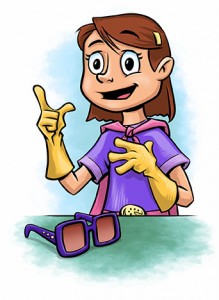Trouble with Movement
Our mom talks with some other people who have FTD and with their family members. She met a woman who uses a wheelchair because she has FTD and ALS. The kids in that family are pretty little and take turns riding in the chair on their mom’s lap.
For some people, FTD shows up in how they walk or move their arms and hands. That happens when FTD is in the part of the brain in charge of moving muscles. People may fall down more and need a cane or walker like someone who is much older. There are several types of FTD that cause trouble with muscles and movement. Some people with FTD lose strength in their muscles because they have FTD and ALS (which is a disease called amyotrophic lateral sclerosis or Lou Gehrig’s disease). Two other subtypes of FTD that cause trouble with movement also have long names: and .
Someone with this type of FTD may:
- Lose strength in their muscles and feel weak
- Start to walk or move more slowly
- Have hands or feet that get shaky
- Have trouble holding objects like a fork or a glass of water
- Trip more easily on stairs or uneven areas outside
- Have trouble swallowing when they eat or drink
What you can do:
- Keep your toys away from where people walk.
- Help the person to hold or carry things.
- Learn how canes, walkers and railings help at home.
- Slow down when you walk or when you are moving near the person.
- Find fun ways to help them stay involved in activities.


